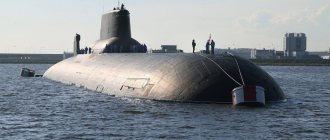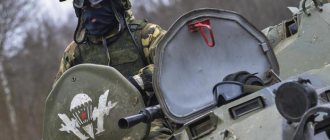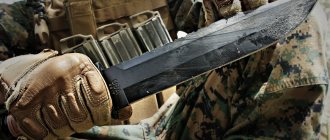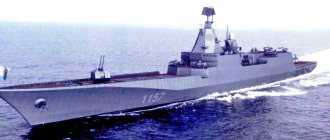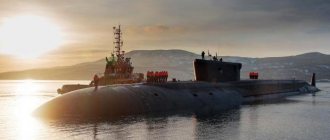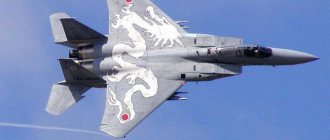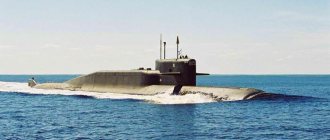The Navy is the most important branch of the armed forces in the country. It is necessary to protect the state border, carry out military exercises in the waters, ensure the economic interests of the country, as well as to carry out search and rescue operations. An important component of the Russian Navy is the submarine fleet.
Let's take a closer look at the submarine forces of the Russian Navy, the history of their creation, the main goals and objectives, which submarines are included and when Submariner's Day is celebrated.
History of the Russian Navy's submarine fleet
The Russian Navy in the modern world is the most important branch of the country's armed forces. It is necessary to protect the state border, carry out military exercises in the waters, ensure the economic interests of the country, as well as to carry out search and rescue operations. An important component of the Russian Navy is the Russian submarine fleet.
The history of the Russian submarine fleet dates back to the 18th century, when a self-taught Russian engineer made a drawing of a “hidden vessel” hidden under water. The submarine's appearance resembled a barrel and was to be made from planks and copper sheets. However, this idea never came to fruition. Only 100 years later, during the reign of Nicholas I, the submarine was launched. It was small in size, but already had weapons - one mine and missiles. At the end of the 19th century, various shipbuilding factories produced experimental versions of underwater structures. The first option, visually closest to its modern counterparts, was the Dolphin submarine, which was submerged in water in 1903. It had a displacement size of 124 tons and included 2 torpedo tubes.
Already in World War I, various countries, including the Russian submarine fleet, actively used submarines in battles. In those years, our country had 75 boats of various configurations. During World War II, the Soviet navy included 212 submarines. History knows many heroic battles where the submarine brigade of our state showed its heroic side.
Creation of nuclear submarines - nuclear submarines
An important stage in the development of this weapon was the 50s of the twentieth century. Submarines began to include nuclear power plants, thanks to which they were able to sail autonomously, without the need to refuel. If we compare Russia and the United States, the first such submarine, called Nautilus, appeared in the United States in 1954. Five years later, the USSR launched its analogue, Project 627. After a short period of time, second-generation nuclear submarines (Project 667) called Murena appeared, which were equipped with multiple warheads. The next stage in the development of nuclear submarines was the presence of silent propellers, ensuring quiet movement. Thus, in 1980, third-generation submarines appeared, which performed a number of strategic tasks and contained cruise missiles. In total, 243 nuclear submarines were built during the existence of the USSR. And if we count the total number of submarines, then it exceeded 1000 units.
In the 90s, the Russian submarine fleet and its weapons, as well as other military and industrial sectors, underwent a crisis. In particular, the abandoned Bechevinka Navy submarine base, whose landmark is Finval Bay in Kamchatka, still appears to us as a cemetery of nuclear-powered ships that cannot be restored.
In recent years, the country's leadership has devoted most of its efforts and resources to modernizing the submarine fleet. At the same time, on the one hand, the underwater nuclear shield from the times of the Soviet Union is being rearmed to a level that meets modern military requirements. At the same time, new missile carriers of such classes as “Borey” and “Yasen” are being designed and produced. Today, according to official data, Russia has 13 nuclear submarines with ballistic missiles, 27 nuclear submarines with missile and torpedo weapons, 19 diesel submarines, 8 special purpose nuclear submarines and 1 special purpose diesel submarine. Is it a lot or a little? For comparison, the United States has about 60 operational nuclear submarines, while they only have nuclear submarines in service. But Great Britain and France each have only 10 nuclear-powered ships. The construction of one modern torpedo is estimated at $1 billion.
Officially, the Russian deep fleet began to exist on March 19, 1906 by signing the relevant documents by Nicholas II. In this regard, in 2006, the country widely celebrated the 100th anniversary of the Russian submarine fleet; a medal “100 years of the submarine fleet” was also issued, and 10 years later the medal “110 years of the Russian submarine fleet.”
"Husky" with "Zircon"
To date, there is little open information about the project of the fifth generation multi-purpose nuclear submarines of the Husky project. It is known that this submarine will be the carrier of a promising missile system (RS) with hypersonic cruise missiles “Zircon”, first mentioned in the media in February 2011. The tentative designation of the RK is 3K-22, the missile itself is 3M22.
In August of the same year, the general director of the Tactical Missile Weapons Corporation, Boris Obnosov, said that the concern was starting to develop a missile capable of reaching speeds of up to Mach 12-13 (Mach number refers to the speed of sound). Typical speeds of modern strike missiles of the Russian Navy are Mach 2-2.5.
According to information from open sources, NPO Mashinostroeniya is engaged in the development of an attack ship-based rocket launcher with the Zircon missile. Information about its technical characteristics is kept secret; presumably, the missile’s flight range can be 300-400 kilometers, and its speed can be up to Mach 6. In March 2016, it became known that testing of the hypersonic Zircon had begun from a ground-based launch complex.
It is with this weapon, according to a RIA Novosti source in the military-industrial complex, that it is planned to equip the Husky multi-purpose nuclear submarines developed by Malachite designers.
In December 2022, the head of the robotics sector of the Malachite MBM, Oleg Vlasov, told RIA Novosti that “the preliminary design of this ship is already ready, and we are presenting it to our general customer - the Commander-in-Chief of the Navy.” At the same time, he said that the planned service life of the Husky nuclear submarine would be more than 50 years.
As Vice Admiral Viktor Bursuk, Deputy Commander-in-Chief of the Russian Navy for Armament, previously stated, the construction of nuclear submarines of the Husky project will be included in the State Armament Program (GPV) for 2018-2025.
New generation submarines
Project 947, called “Shark,” began production in the 90s; it was a direct descendant of the previous series of Project 941 torpedoes. Today it is possible to create updated versions of it, “Shark 2,” which do not have the main drawback of their predecessors – loud engines. This submarine is similar in appearance to a catamaran - you can see 2 hulls on top. The control center and radio equipment of the torpedo are located between them. A missile unit is located in the front block. The maximum length is 172 meters, width - 23 m. It can float for 120 days without surfacing at a diving depth of up to 480 m. Swimming speed is 12 knots when swimming on the surface of the water and 25 knots at depth. The main weapons carried in these types of nuclear-powered ships are solid-fuel ballistic missiles with a range of 8.3 thousand km; the firing unit is divided into 10 warheads. The giant “Shark” remains today a unique military equipment in the world, which is able to maintain a combat watch in the Arctic.
Project 877 Halibut and 636 Varshavyanka are the most important type of non-nuclear submarines that serve the Navy of Russia and other countries. The first such submarines appeared in the 70s of the twentieth century. The design turned out to be successful, so a revised version is still being released. The body is made in the shape of an airship, from the point of view of flow - this is an ideal shape. This shape with mathematically calculated optimal dimensions allows you to increase the speed of movement. Western countries nicknamed the “Varshavyanka” “Black Hole” due to its high agility and secrecy. In modern years, an improved model of the “Varshavyanka” has appeared - the boat “Krasnodar” entered the Navy in 2015, this model is faster and safer than the previous generation, they are rightfully considered one of the quietest submarines
Project 955 Borei is the highest class of fourth generation missile submarine force, the basis of the strategic deterrent force. On board such a cruiser there are 16 launchers, it is also armed with a mace and is capable of reaching any point in the northern hemisphere. The length is 170 meters, only 1/6 of the hull is visible on the surface, the rest of the hull is under water. At the same time, the nuclear missile carrier is quiet and invisible to the enemy thanks to a special coating. Being at depth, "Borey" is capable of performing tasks for 3 months, and carries out an assault at depths of up to 500 meters. The Russian Navy has 4 submarines in service, with 2 more under construction. It is planned to gradually replace these nuclear submarines to replace the outdated Sharks. By 2022, 10 such submarines are planned. In the West, "Borey" is called the "deep monster." The strategic submarines of the Borei project were developed at the Rubin design bureau.
Submarine fleet in our time
Russia's most secret military project is fourth-generation submarines. A modern high-tech combat vehicle called "Ash", which is called a masterpiece in terms of underwater shipbuilding, is a unique underwater vehicle equipped with cruise missiles. The first such fourth-generation nuclear submarine was put into service in 2014 and named “Alexander Nevsky”, by 2022 it is planned to complete the construction of 6 more “Ash”. The vessel has a crew of over 100 people, has the ability to sail autonomously for 30 years, and operates exclusively on the energy of a nuclear reactor. The length of the vessel ranges from 140 to 170 meters. The nuclear submarine includes 2 hulls: lightweight on the outside, high-strength on the inside. The high-strength hull houses the crew, equipment and ammunition, and is made of ultra-strong unique steel. At the same time, the metal (as well as all other elements) is used exclusively in domestic production. The area between these bodies is filled with water when submerged. Submarine cruisers have the ability to dive to depths of up to 600 meters. They carry several times more equipment than any surface ship. A new screw design has been developed, the shape of which is carefully hidden. Thanks to it, there is no vibration or noise when the ship moves, thereby making it invisible to the enemy. The boat is divided into compartments, each of them is sealed and can be isolated from the others, this is necessary to ensure the safety of the crew. A total of 8 to 10 compartments are expected:
- The first contains torpedo tubes and a sonar system;
- The second contains the central torpedo station, living quarters, galley and storerooms;
- The third contains auxiliary equipment and part of the combat posts. There is also a pop-up rescue chamber designed for the entire crew.
- Several missile compartments;
- Atomic reactor;
- Turbine installation;
- Emergency submarine control station.
The Yasen multi-purpose attack submarines are being designed at the Malachite design bureau. This project has absorbed all the best that was designed within the walls of Malachite. The design of each new class of submarine takes several years, and even at this stage various tests are carried out.
The shipbuilding factories of the Russian Federation are already working on the development of fifth-generation submarines; these will be even more advanced and powerful models of combat units that will be able to ensure the security of the state and tranquility in other countries.
The Russian Navy has 5 main directions. In the Baltic Fleet, the base locations are called the Leningrad region, in the Black Sea Fleet - Sevastopol. They contain brigades of diesel submarines that carry out economic, political and combat missions. In the Pacific Ocean, strategic missile submarines, multi-purpose nuclear and diesel submarines are responsible for the country's security. The foundation of the Russian Northern Fleet consists of torpedo and nuclear torpedo submarines. Submariners of the Northern Fleet monitor and conduct months of duty in the northern part of the world. 4 strategically important points in Russia are provided with submarines for various purposes, performing the necessary work related to monitoring security on the country’s border and peace in the world.
The Russian submarine fleet is a unique force, service in them is highly risky and difficult. Officers serve for months under a thick layer of expanses of water without surfacing. The torpedo's durable body saves them from the pressure below. In the recent past, the flag of the Russian submarine fleet was created. The country's coat of arms is superimposed on the base of the St. Andrew's flag, and the St. George ribbon is placed below. In 2002, the International Association of Navy Veterans and Submariners was founded in St. Petersburg, which supports maritime traditions, the importance and necessity of such a profession, ensures the prestige of the submarine service and organizes holidays related to the Navy, rewarding heroic officers and commanders.
Main goals
The Submarine Force is a branch of the Navy's forces that includes nuclear-powered strategic missile submarines, nuclear-powered attack submarines, and diesel-electric (non-nuclear) submarines.
The main tasks of submarine forces are: defeating important enemy ground targets; search and destruction of enemy submarines, aircraft carriers and other surface ships, its landing forces, convoys, single transports (ships) at sea; reconnaissance, ensuring the guidance of their strike forces and issuing target designations to them; destruction of offshore oil and gas complexes, landing of special-purpose reconnaissance groups (detachments) on the enemy coast; laying mines and others. Organizationally, submarine forces consist of separate formations that are subordinate to the commanders of submarine formations and the commanders of formations of heterogeneous fleet forces.
Unlike other branches of the Navy, submarine forces, as the strike force of the fleet, have a number of properties that determine their advantage in armed combat at sea: secrecy of actions, the ability to conduct combat operations in any area of the World Ocean, the ability to deliver powerful nuclear missile strikes on military-critical targets. against enemy targets and most effectively conduct combat operations against enemy surface combatants, submarines, transports and vessels.
They have the ability to operate under the ice of the Arctic basin and have little dependence on hydrometeorological conditions in the combat area.
Also, submarine forces, as an integral part of the Navy, perform a number of important tasks to ensure the national interests of the Russian Federation in the World Ocean: maintaining sovereignty in internal sea waters, the territorial sea, on the bottom and in the subsoil; exercise of jurisdiction and protection of sovereign rights in the exclusive economic zone for the exploration, development and conservation of natural resources, both living and non-living, located on the bottom, in its subsoil and in the covering waters; protection of sovereign rights on the continental shelf of the Russian Federation for the exploration and development of its resources; protection of freedom of the high seas, including freedom of navigation, overflight, fishing, and scientific research; protection of the territory of the Russian Federation from maritime directions, protection and security of the state border of the Russian Federation at sea.
